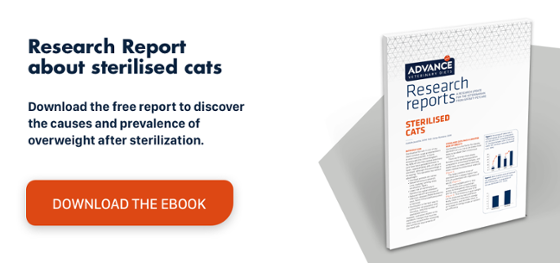Calcium oxalate crystals in urine and their dietary prevention
Oxalate crystals in urine: introduction
Although the leading cause of feline lower urinary tract disease (FLUTD) is feline idiopathic cystitis, urinary crystals occupy second place and are responsible for 25% of cases.
Urinary stones can be formed from crystals of struvite (magnesium ammonium phosphate), oxalate or less frequently other minerals such as phosphate. Struvite stones are the most common type of urinary stones to form in the lower urinary tract (bladder and urethra) (60%), followed by oxalate stones (30%). These differences seemed to be levelling out over the last 5 years, but in the last 3 years struvite stones have once again increased in incidence.
Causes of calcium oxalate and struvite crystal formation in urine
The incidence and composition of uroliths is influenced by different factors, such as breed, sex, age, diet, anatomical abnormalities, urinary tract infections, urine pH and drug treatments.
Clinical picture
Kidney stones can cause pyelonephritis, urinary obstruction, kidney atrophy, azotaemia and kidney failure.
Can their formation be prevented?
Yes. The key to the effective treatment and prevention of urolithiasis, which often has a high recurrence rate, is identifying the risk factors for the formation of calcium oxalate crystals.
So, the cat’s diet can be modified to eliminate the stones and prevent the recurrence of FLUTD.
The general aim of the dietary management of urolithiasis is to produce urine with a low calcium oxalate saturation:
- by increasing water intake and therefore urine output to reduce the concentration of crystalloids in the urine;
- by altering urine pH to increase the solubility of the crystalloids; and
- by modifying the diet to reduce the amount of crystalloids excreted in the urine.
A study (1) was conducted in 2012 to assess urinary concentrations of glycosaminoglycans, Tamm–Horsfall glycoprotein and nephrocalcin in cats given a diet formulated to prevent calcium oxalate stone formation. The diet was found to have no effect on Tamm–Horsfall glycoprotein and nephrocalcin urinary levels. However, during the treatment period with the urolith prevention diet, there was a significantly higher urinary concentration of glycosaminoglycans (glycoproteins which inhibit the growth and aggregation of calcium oxalate crystals).

